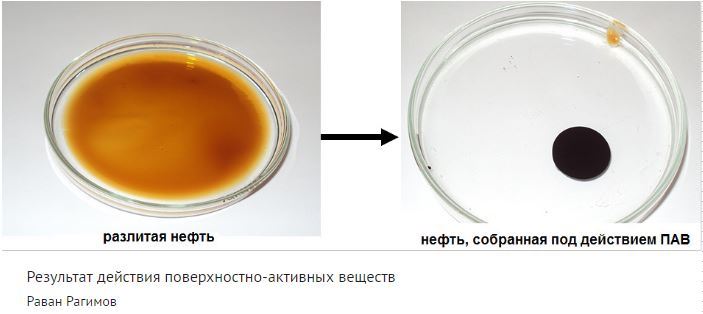New surface-active substances (PAHs) capable of collecting oil spilled on the surface of water have been found
Chemists have synthesized new surface-active substances (PAV), which can effectively collect oil spilled on the surface of the water. Scientists from the Russian University of Peoples’ Friendship (RUDN) and the Institute of Petrochemical Processes named after academician Yu.G. Mammadalieva (Azerbaijan) was told in the Journal of Molecular Liquids.
Scientists have identified the physical-chemical and colloidal-chemical parameters of the resulting compounds – ionogenic (disintegrating in water solution on ions) and non-ionogenic PAHs. Synthesized substances can localize thin (less than one millimeter) oil films on the surface of the water, that is, limit their distribution, forming smaller areas and large oil spots.
“It is known that the problem of oil pollution of the oceans is relevant due to the intensification of the rate of oil production and the increase in the volume of oil transportation on waterways. When collecting spilled oil mechanically, a thin film remains on the surface, which can be localized only by physical and chemical methods, including the use of oil-collecting PAV,” said one of the authors of the work, Ravan Rahimov, a member of the Department of Organic Chemistry at RUDN.
Many PAUs that can collect oil are poorly soluble in water, which reduces the diffusion rate and slows the location of the spill. In synthesized compounds, scientists have been able to improve diffusion and absorption (concentration of matter at the border of environments, in this case water and oil).

In their work, the scientists used methods such as nuclear magnetic resonance spectroscopy (IC) and infrared (IC) spectroscopy, dynamic light scattering, conductometry (measurement of electrical conductivity of solubles) and viscosimetry (measurement of viscosity of gases and liquids). They also used the tensiometry method (accurate measurement of voltage and pressure fluctuations) to establish that the greatest surface activity is shown by compounds derived from one of the studied compounds, dodecilamine. Also, the efficiency of oil harvesting is influenced by the intensity of the formation of micelles – self-formed aggregates of molecules. Their formation is associated with the structure of PAW molecules (e.g., the size of a non-polar radical and the nature of the polar group).
The mechanism of the oil-collecting surface-active substance is described by the scientist as follows: “The oil-collecting reagent spontaneously spreads and creates surface pressure. This pressure acts on the oil film on the surface of the water. When the pressure of the reagent is spread above the pressure of the oil spill, the oil film thickens and shrinks due to the pressure of the PAV s
pill.Source indicator.ru